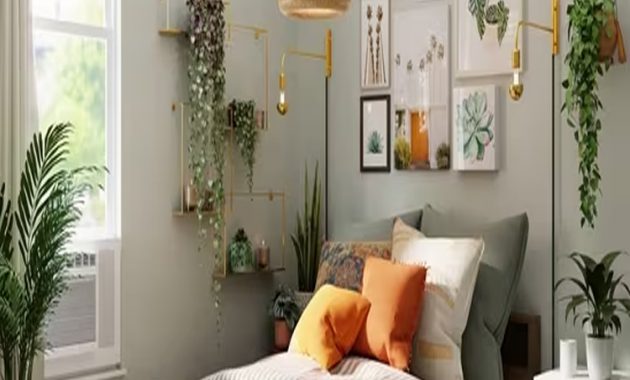Home In today’s urban living, maximizing space without compromising on style and comfort has become essential. Small spaces present unique challenges but also offer opportunities for creative home furnishing solutions that can transform cramped quarters into functional and aesthetically pleasing environments.

Multi-Functional Furniture
Sofa Beds and Convertible Seating
One of the most popular examples of multi-functional furniture is the sofa bed. By day, it serves as a comfortable seating option for lounging or entertaining guests. By night, it effortlessly transforms into a cozy bed, providing sleeping accommodations without the need for extra rooms or bulky mattresses. This dual-purpose functionality makes sofa beds ideal for studio apartments or guest rooms where space is at a premium.
Coffee Tables with Storage
Coffee tables with built-in storage compartments or drawers are another ingenious solution for small spaces. These tables not only serve as a focal point in living areas but also offer discreet storage for magazines, remote controls, and other living room essentials. Some models even feature lift-top designs that reveal additional storage space, perfect for stashing blankets or board games while maintaining a clutter-free environment.
Minimalist Decor
Clean Lines and Functional Furniture
Central to minimalist design are sleek, straight lines that delineate both furniture and architectural features. Furniture pieces often feature simple designs with no unnecessary ornamentation, creating a sense of visual clarity and openness. In small spaces, opting for furniture with slim profiles and geometric shapes helps maintain a streamlined look without overwhelming the room.
Neutral Color Palettes
Minimalist interiors typically favor neutral color palettes such as whites, grays, beiges, and subtle earth tones. These colors create a serene and cohesive atmosphere, making small rooms appear larger and more invitingBy adhering to a restricted palette of colors, you can achieve a harmonious equilibrium among furnishings, walls, and flooring, ensuring each element contributes to the overall aesthetic without competing for attention.
Flexibility with Modular Furniture
Customizable Configurations
One of the key advantages of modular furniture lies in its customizable configurations. Modular sofas, for example, consist of individual sections that can be easily rearranged to create different seating arrangements, such as L-shaped or U-shaped configurations. This flexibility allows homeowners to adapt their living room layout to accommodate gatherings, movie nights, or simply to refresh the room’s look.
Expandable Storage Solutions
Modular shelving units and storage systems are designed to grow with your needs. These units typically consist of interchangeable components like shelves, cabinets, and drawers that can be added or removed as required. In small spaces, modular storage allows for efficient organization of belongings while maximizing vertical and horizontal space utilization. Whether used in living rooms, bedrooms, or home offices, these systems provide ample storage without overwhelming the room’s design.
Utilizing Light and Mirrors
Natural Light Optimization
Maximizing sunlight is crucial in designing small spaces. Large windows or strategically placed skylights allow ample daylight to penetrate the room, creating a sense of openness and airiness. To optimize natural light, consider using sheer or light-filtering window treatments that allow sunlight to enter while maintaining privacy. Position furniture and decor away from windows to prevent blocking light and to maintain a spacious feel throughout the day.
Artificial Lighting Solutions
In spaces where natural light is limited, artificial lighting becomes essential for creating a well-lit and inviting atmosphere. Layering different types of lighting—such as overhead fixtures, task lighting (e.g., desk lamps), and accent lighting (e.g., wall sconces or spotlights)—helps illuminate specific areas and enhances functionality. Opt for adjustable lighting options to cater to different activities and moods, ensuring optimal brightness without overwhelming the space.
Customized Built-Ins
Seamless Integration with Architecture
One of the primary advantages of custom built-ins is their ability to integrate seamlessly with existing architectural features and room layouts. Unlike freestanding furniture, built-in installations blend harmoniously into walls, alcoves, or recessed spaces, optimizing floor space and enhancing visual continuity. This integration not only enhances the aesthetic appeal of the room but also creates a cohesive and organized environment that supports daily activities and routines.
Maximizing Functional Efficiency
Custom built-ins are designed with functional efficiency in mind, offering specialized features that enhance usability and accessibility. Built-in desks with integrated storage compartments optimize workspace while minimizing visual clutter. Entertainment centers with built-in media consoles and cable management systems streamline electronics and entertainment accessories. These tailored solutions ensure that every component serves a purpose, contributing to an efficient and well-organized living space.
Conclusion, Innovative home furnishing ideas for small spaces revolve around creativity, functionality, and a keen eye for design. By embracing multi-functional furniture, smart storage solutions, minimalist decor, and strategic use of light and greenery, you can transform even the tiniest of spaces into stylish and efficient living areas. Remember, the key lies in maximizing every inch of space while maintaining a sense of openness and Home comfort.